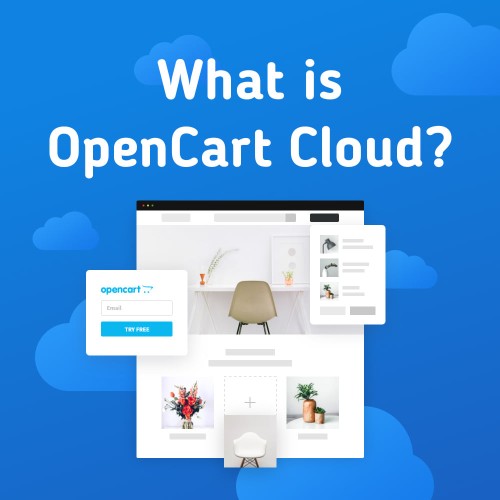Cross-Border E-commerce: Strategies for Expanding Your Online Store to Global Markets
Are you an online shop owner or eCom marketing manager struggling to expand your online business to worldwide markets?
This article is for you if you are:
- Unsatisfied with your local market's limits and wish to tap into the immense potential of overseas markets.
- Desiring to establish yourself and expand outside your local market but still trying to figure out how to approach clients worldwide properly.
The hassles of expanding your internet store to overseas markets might be horrifying.
Research indicates cross-border e-commerce will surpass $2.1 trillion in 2023, significantly from $1.9 trillion in 2022. Going worldwide is no longer a luxury in today's interconnected society but a need. Over half of retail and manufacturing companies surveyed in early 2023 engage in cross-border e-commerce, with 56% already making international sales.
So brace up because I will reveal a few helpful strategies for growing your online business to worldwide markets- all in the fascinating world of cross-border e-commerce today.
What is cross-border e-commerce?
Cross-border e-commerce is selling goods or services online to people in different nations. It involves contacting global consumers and performing cross-border commercial operations through your internet store.
There are a multitude of reasons why businesses should consider expanding to global markets. Expanding your reach outside your local market exposes you to many prospective clients actively seeking your products or services.
The worldwide marketplace provides enormous growth possibilities, expanded income sources, and improved brand awareness. It enables you to broaden your client base, lessen reliance on a single marketplace, and protect your business from economic downturns. You can even increase your online sales in a rising inflation world by leveraging BNPL platforms like Afterpay and Clearpay.
In my opinion, if you embrace worldwide markets, it’ll establish you as a competent participant in the e-commerce industry and allows you to succeed in the digital age that is constantly developing.
Overview of strategies for successful cross-border e-commerce
You have a fantastic product or outstanding service. Now to market it internationally, you need a fool-proof system in place. Below are the valuable tips you can use to expand your e-commerce business globally.
Researching and Understanding the Target Market
The first and most crucial stage is thoroughly researching and knowing your target market. You may be wondering why. It is done to help you make well-informed decisions, eliminate risks, and define your path to success in cross-border e-commerce.
Remember that establishing a solid basis for effective market entrance and long-term growth begins with having a thorough awareness of the market setting and customer preferences. To keep your motivation high in this challenging endeavor, consider drawing inspiration from growth mindset quotes that encourage perseverance, adaptability, and continuous learning.
Determining Potential Markets and Evaluating Market Demand
Begin by finding potential markets for your products or services. Evaluate the size of the population, economic statistics, and rising trends. For instance, if you offer organic skin care products, you may wish to focus on areas with an increasing demand for organic and eco-friendly items.
Understanding Local Laws, Regulations, and Taxes
Every country has its e-commerce laws and rules. Learn about import/export legislation, customs processes, and criteria for selling in a particular market. Also, understand the tax repercussions and the need to associate with overseas sales. For example, specific nations may demand special certificates.
Analysing Local Cultural Norms and Consumer Behaviour
Cultural norms and consumer behavior may differ significantly between marketplaces. Take the time to study and know your target audience's interests, routines, and purchase behaviors in each area. You may even consider hiring in a specific marketplace to provide expert local insight, in which case Remote's guide to hiring internationally will help. Adjusting your marketing message and offerings to local preferences may boost consumer engagement and conversions. Adjusting your marketing message and offerings to local preferences may boost consumer engagement and conversions.
Optimizing Website for Cross-Border E-commerce
Optimizing your website for cross-border e-commerce is necessary for competently catering to overseas clients. Consider the following primary strategies:
Translating website content into local languages
Breaking through language barriers is critical when connecting with clients from overseas countries. Translate the product descriptions, customer reviews, and support materials on your website into the local language of your target markets. It builds credibility while also making your website more reachable to people all around the world.
For tips on improving website visibility on Google, check out this article on "How to Improve E-commerce Website Visibility.
Website layout and user experience localization
Match your website layout and user experience to your target markets' tastes and needs. Color palettes, images, navigation, and structure are all critical considerations. Localize your website to represent cultural differences and provide foreign clients with a streamlined shopping and browsing session ultimately driving more lead generation.
Accepting local payment methods
Streamline the entire payment procedure by allowing popular and reliable local payment options in every market. Investigate and incorporate payment channels popular in specific locations, such as Alipay in China or iDEAL in the Netherlands. Offering recognizable and simple options for payment boosts client confidence and decreases abandonment of carts.
Logistics and Fulfillment
Efficient logistics and fulfillment activities are critical for providing your global consumers with a consistent experience. Take the following approaches:
Choosing suitable shipping options
Compare various shipping providers and choose ones that provide dependable, cost-effective, and tracked shipping options for foreign delivery. Evaluate delivery schedules, costs, and services to select the best fit for your company and clients.
Partnering with local carriers and fulfillment centers
Cooperate with local carriers and fulfillment centers in your intended markets. It improves shipment effectiveness, decreases travel times, and may result in reduced shipping expenses. In addition, working with local professionals ensures a seamless logistics procedure and speedier order fulfillment.
Understanding customs and import/export regulations
Learn about every target market's customs procedures and import/export restrictions. To minimize delays or charges, ensure adequate paperwork and adhere to requirements. To handle the intricacies of international trade, consult with logistic professionals or customs brokers.
You can boost customer happiness and loyalty by strengthening logistics and fulfillment processes. This allows you to deliver rapid and dependable delivery, save money on shipping, and comply with international rules.
Marketing and Advertising
To effectively reach and connect with your target audience, you must adopt efficient advertising and marketing methods while growing your online shop to international markets. Let's look at some essential strategies to think about:
Crafting a localized marketing strategy
Customize your sales strategy to each target market's distinct cultural tastes and behaviors. Perform extensive market analysis to determine the most successful channels and techniques for reaching your target demographic. For instance, if you're growing into the Middle Eastern market, adding local customs and beliefs into your advertising campaigns might help you connect with local consumers more deeply.
Pro tip: Use appealing visual components like infographics to improve your content marketing approach or make use of an AI image generator to stand out amongst the competition. It can effectively pass on information while capturing your target audience's attention.
Employing social networks and local influencers
Use social media channels to reach overseas audiences. Create localized social media profiles and connect with your desired audience by providing relevant material, replying to queries, and launching tailored promotions.
In addition, connect with local influencers in your target market with an established following and impact. Their suggestions and endorsements may dramatically increase exposure and sales. Additionally, explore how to search for people on Tiktok or similar platforms, for they can further amplify your reach in a professional manner.
Display User-Generated Content on Your Website
Utilize the power of user-generated content on your website to amplify your brand's credibility and foster a sense of community. By showcasing testimonials, reviews, and authentic experiences from satisfied customers, you can build trust with potential buyers and influence their purchasing decisions.
Also, to boost your sales you can make UGC shoppable, so if the user finds the product attractive they can make a direct purchase from the post. There are many social commerce platforms that can help you to make your posts shoppable.
User-generated content encourages active engagement and participation, creating a loyal customer base. Leverage this valuable resource to strengthen your brand's reputation, increase conversions, and create a vibrant online presence that resonates with your audience.
Embrace the authenticity and social proof that user-generated content brings, and watch your website flourish with the influence of your satisfied customers.
Customer Service
When operating in an array of overseas markets, it becomes essential to move beyond language hurdles and cultural variations to give excellent customer service. Consider the following fundamental tactics for offering outstanding customer service:
Providing multilingual customer support
Recognize your consumer base's language diversity and ensure you have a multilingual help crew or access to language translation services. This enables you to connect successfully with consumers in their chosen language, quickly resolving their issues and inquiries. The more you speak their language, the more you respect their culture and the more personalized their experience will be.
For instance, Airbnb, an online housing marketplace, offers multilingual customer service to its worldwide user base. To promote efficient interaction and client satisfaction, they provide support in various dialects, including English, Spanish, French, and Chinese.
Understanding local customer service expectations
Whenever talking about customer service, each culture has its standards. Investigate and understand the particular customer service demands in your target markets. It encompasses things like response time, communication style, and preferred ways of connection. Responding to these standards demonstrates an appreciation for the local culture and contributes to superb client experiences.
Preparing for potential language and cultural barriers
Foreseeing and overcoming linguistic and cultural hurdles when working with overseas consumers is critical. Ensure your customer service team is prepared to manage situations where language barriers or cultural disparities may arise. Help them with the resources and skills to overcome these challenges effectively.
Offer customers to interact with you on all channels
Make sure that you offer your clients the possibility to interact with you directly on all the social media channels where you are present. In fact, social media is fast becoming the most popular customer service channel, so make sure to do it right.
Managing Returns and Refunds
Returns and refunds must be managed smoothly as part of cross-border e-commerce. You can increase trust, reduce possible issues, and ensure a great buying experience by prioritizing customer pleasure and building a streamlined procedure.
Understanding local return policies
Familiarise yourself with every target market's return policies. Customers in certain nations, for instance, ask for extended return periods, while others may have severe return eligibility restrictions. You can fulfill client standards and retain a great image by matching your return policies with regional standards.
Establishing a transparent and efficient return process
Enhance customer convenience and transparency by streamlining returns and refunds. Your return policy should be clearly communicated on your website, including procedures for conducting returns, packing requirements, proof of receipt, and reimbursement dates. In addition, create a user-friendly web portal or customer care channel wherein customers may begin and monitor their return requests.
Data and Analytics
Analyzing market trends, optimizing your approach, and enhancing the customer experience need analysis and data.
Tracking and analyzing cross-border e-commerce metrics
Implement efficient tracking techniques to collect accurate information for each target market, like site traffic, conversion rate, and average order value. Then, analyze this information to find trends, patterns, and opportunities for growth. As a result, you may acquire insights into client behavior, discover high-performing marketplaces, and make data-driven choices by tracking essential KPIs.
Tracking the conversion rates by nation, for instance, may reveal that particular countries have a greater conversion rate, suggesting strong consumer interest and development potential.
Using Data to optimize cross-border e-commerce strategy
Determine how you can improve client acquisition, retention, and conversions. Utilize data-driven insights to enhance your web design, product selection, pricing strategy, and marketing initiatives. Evaluate and analyze the efficacy of your approach regularly, and make improvements as suitable.
Incorporating customer feedback to improve customer experience
Solicit and analyze consumer comments to learn more about their experiences. Use polls, reviews, and social media tracking to learn about consumer satisfaction, pain points, and areas for development. Then, respond to consumer feedback proactively and take measures to remedy any problems highlighted.
Conclusion
Cross-border e-commerce allows you to expand your online business to worldwide markets, opening up various possibilities. You may attract new clients, grow revenue, and develop a strong footprint in overseas markets by applying the proper techniques and adopting a global attitude.
Global market success necessitates change, cultural awareness, and a customer-centric strategy. You can develop trust and loyalty amongst your audience worldwide by customizing your offers to local preferences, delivering outstanding customer service, and employing insights based on data.
So, take advantage of the chance, take measured risks, and grow your online enterprise to the distant reaches of the globe.



Login and write down your comment.
Login my OpenCart Account